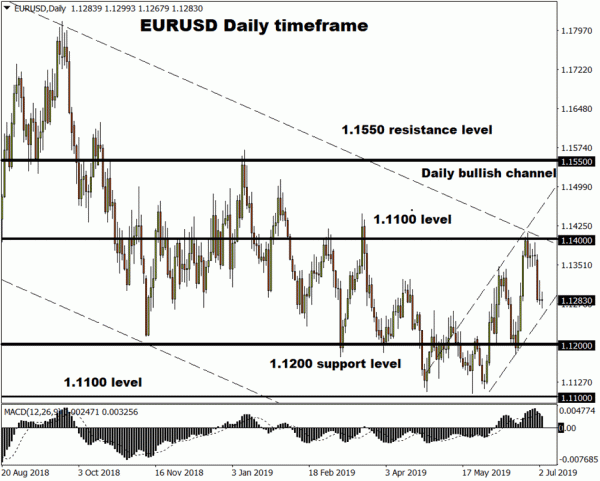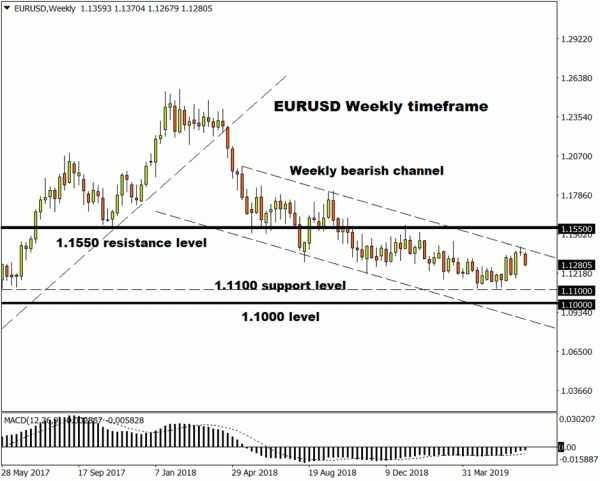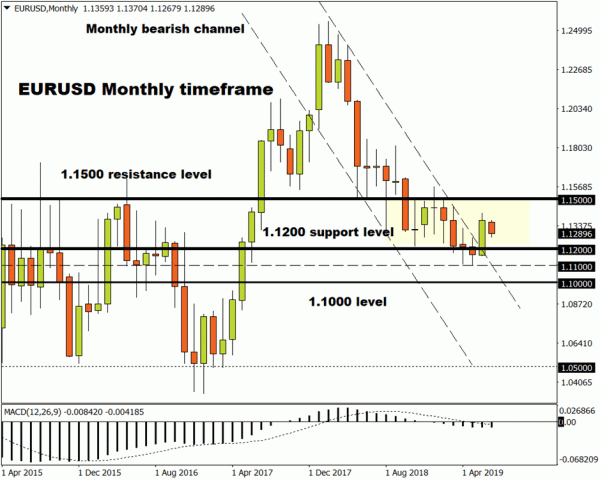Investors shouldn’t kid themselves that the Euro’s 1.38% appreciation against the Dollar in the second quarter reflects improved investor sentiment towards the Eurozone economy. The substantial increase in expectations that the Federal Reserve will step in with another round of monetary easing has softened the greenback against its major counterparts, lifting the Euro in the process.
The Eurozone economy remains vulnerable to a number of headwinds, meaning the path of least resistance for the Euro points south as we head into the second half of 2019. Unfavourable macroeconomic conditions including PMI weakness across the manufacturing sector and dipping German consumer confidence in June raise the stakes that the European Central Bank (ECB) will need to consider pulling the trigger on another round of monetary easing.
EURUSD parity has been a hot topic of debate over the past five years. It might seem like a long shot with the Euro trading close to 1.14 at the time of writing, but the economic outlook for the Eurozone remains highly fragile and 1:1 in the Euro is still a checkpoint that should at least be spoken about.
ECB reloads easing ammunition with talk of another rate cut, but will it pull the trigger?
Risks in the form of prolonged trade tensions between the United States and China, uncertainty over Brexit ahead of the October 31 deadline, the ongoing disputes between Rome and Brussels over Italy’s fiscal deficit and even the probability that the Trump administration will target Europe next with tariffs are all factors that should cloud the Euro’s outlook in the third quarter.
With economic data from Germany repeatedly disappointing, consumer confidence in a downward spiral and recession fears adding to the horrible mix of factors painting a gloomy picture for the Eurozone, it is a matter of when rather than if the ECB will come to the rescue.
Unfavourable global and domestic conditions will most likely prompt the ECB to pull the trigger on an interest rate reduction this year, but this will be contingent on the Federal Reserve making a move first.
Europe remains trapped in Trump’s trade war crossfire
Another cloud hovering over the European Union heading into Q3 is the threat of President Trump imposing tariffs on European car exports.
Although the deadline for the auto tariffs is in November, this could be pushed forward if a downbeat ECB outlook exasperates Trump. He has already complained on social media that a softer Euro makes it “easier” for Europe to “compete against the USA.”
Given the Eurozone manufacturing sector contracted again in June according to the latest PMI figures, auto tariffs will have terrible consequences for the Euro economy.
Taking everything into account, the threat of a US-EU trade dispute coupled with Italian political risks creates a perfect storm for the Euro.
EURUSD on highway towards 1.11 and lower as technical line
Focusing on the technical picture, the EURUSD remains in a steady downtrend on the monthly charts with 1.15 acting as reliable resistance.
A decisive weekly close below 1.12 could signal a decline towards 1.11 and 1.10 – a level not seen since May 2017.
If the EURUSD manages to close above 1.14 on a monthly basis, this could open the doors back towards the 1.15 resistance. The bearish setup on the monthly charts is invalidated once a monthly close above 1.15 is secured.
















